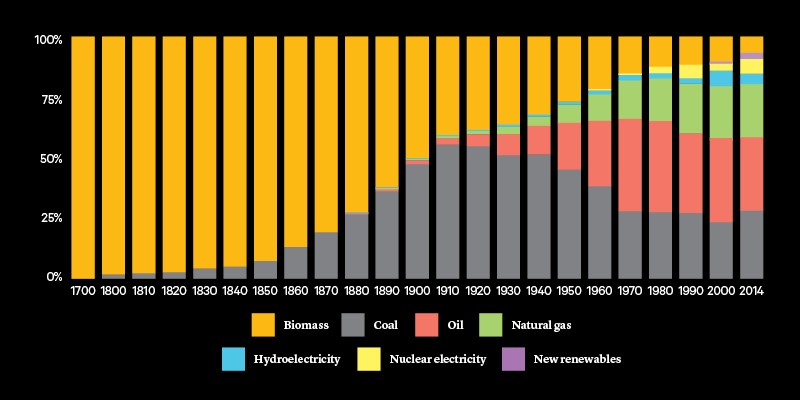‘We Need an Energy Miracle’
Bill Gates has committed his fortune to moving the world beyond fossil fuels and mitigating climate change.
In his offices overlooking Lake Washington, just east of Seattle, Bill Gates grabbed a legal pad recently and began covering it in his left-handed scrawl. He scribbled arrows by each margin of the pad, both pointing inward. The arrow near the left margin, he said, represented how governments worldwide could stimulate ingenuity to combat climate change by dramatically increasing spending on research and development. “The push is the R&D,” he said, before indicating the arrow on the right. “The pull is the carbon tax.” Between the arrows he sketched boxes to represent areas, such as deployment of new technology, where, he argued, private investors should foot the bill. He has pledged to commit $2 billion himself.
“Yes, the government will be somewhat inept,” he said brusquely, swatting aside one objection as a trivial statement of the obvious. “But the private sector is in general inept. How many companies do venture capitalists invest in that go poorly? By far most of them.”Gates is on a solo global lobbying campaign to press his species to accomplish something on a scale it has never attempted before. He wants human beings to invent their way out of the coming collision with planetary climate change, accelerating a transition to new forms of energy that might normally take a century or more. To head off a rise in average global temperatures of 2 degrees Celsius above preindustrial levels—the goal set by international agreement—Gates believes that by 2050, wealthy nations like China and the United States, the most prodigious belchers of greenhouse gases, must be adding no more carbon to the skies.
Those who study energy patterns say we are in a gradual transition from oil and coal to natural gas, a fuel that emits far less carbon but still contributes to global warming. Gates thinks that we can’t accept this outcome, and that our best chance to vault over natural gas to a globally applicable, carbon-free source of energy is to drive innovation “at an unnaturally high pace.”
On whether new commitments to reduce greenhouse-gas emissions expected at the United Nations climate-change conference in Paris in December mean the world is now serious about the problem:
It’s good to have people making commitments. It’s really good. But if you really look at those commitments—which are not binding, but even if you say they will all be achieved—they fall dramatically short of the reductions required to reduce CO2 emissions enough to prevent a scenario where global temperatures rise 2 degrees Celsius. I mean, these commitments won’t even be a third of what you need.
And one of the interesting things about this problem is, if you have a country that says, “Okay, we’re going to get on a pathway for an 80 percent reduction in CO2 by 2050,” it might make a commitment that “Hey, by 2030, we’ll be at 30 percent reduction.” But that first 30 percent is dramatically, dramatically easier than getting to 80 percent. So everything that’s hard has been saved for post-2030—and even these 2030 commitments aren’t enough. And many of them won’t be achieved.
Well, there’s no fortune to be made. Even if you have a new energy source that costs the same as today’s and emits no CO2, it will be uncertain compared with what’s tried-and-true and already operating at unbelievable scale and has gotten through all the regulatory problems, like “Okay, what do you do with coal ash?” and “How do you guarantee something is safe?” Without a substantial carbon tax, there’s no incentive for innovators or plant buyers to switch.
And for energy as a whole, the incentive to invest is quite limited, because unlike digital products—where you get very rapid adoption and so, within the period that your trade secret stays secret or your patent gives you a 20-year exclusive, you can reap incredible returns—almost everything that’s been invented in energy was invented more than 20 years before it got scaled usage. So if you go back to various energy innovators, actually, they didn’t do that well financially. The rewards to society of these energy advances—not much of that is captured by the individual innovator, because it’s a very conservative market. So the R&D amount in energy is surprisingly low compared with medicine or digital stuff, where both the government spending and the private-sector spending is huge.
What’s amazing is how our intense energy usage is one and the same as modern civilization. That is, for all the great things that happened in terms of human lifestyle, life span, and growing food before 1800, civilization didn’t change dramatically until we started using coal in the U.K. in the 1800s. Coal replaced wood. But the wave of wood to coal is about a 50- or 60-year wave.
If it was just about economics, if we had no global warming to think about, the slowly-but-surely pace of these transitions would be okay. If you look at one of these forecasts, they all say about the same thing: What you look at is a picture that’s pretty gradual, with natural gas continuing to gain at the expense of both coal and oil. But, you know, 1-percent-a year-type change. If you look at that from a greenhouse-gas point of view—if you look at forecasts—every single year we’ll be emitting more greenhouse gases than the previous year.
On whether we’ve ever done anything as big, as a species, as what he’s asking for now:
Well, sort of no. Because the scale of it is very big. People can talk about the Manhattan Project during World War II—the challenge of “Hey, should we get a nuclear weapon before, potentially, the Japanese or Germans do?” The speed of innovation there really was mind-blowing. And they had to find two paths to get there. One was enriching uranium; the other was breeding plutonium. And, in fact, the first bomb was a uranium bomb; the second bomb was plutonium. Both paths gave them what they’d hoped for. So there’s some amazing things—people look at the digital realm and see the pace of innovation. And that does kind of spoil you, because you can just put something up on the Web, and a hundred million people can download it.
People think, Oh, well, I’ll just get an electric car. There are places where if you buy an electric car, you’re actually increasing CO2 emissions, because the electricity infrastructure is emitting more CO2 than you would have if you’d had a gasoline-powered car.
On what it will take to accelerate the transition from carbon-emitting energy:
When people viewed cancer as a problem, the U.S. government—and it’s a huge favor to the world—declared a war on cancer, and now we fund all health research at about $30 billion a year, of which about $5 billion goes to cancer. We got serious and did a lot of R&D, and then we got the private sector involved in taking that R&D and building breakthrough drugs.
Realistically, we may not get more than a doubling in government funding of energy R&D—but I would love to see a tripling, to $18 billion a year from the U.S. government to fund basic research alone. Now, as a percentage of the government budget, that’s not gigantic. But we are at a time when the flexibility—because of health costs and other things, but primarily health costs—of the budget is very, very squeezed. But you could do a few-percent tax on all of energy consumption, or you could use the general revenue. This is not an unachievable amount of money.
On why, considering the level of debate in the presidential campaign, he thinks this kind of investment is imaginable:
Well, the success of the United States in medical research is really incredible. I mean, it’s phenomenal. We spend $30 billion a year of government money, and the private sector goes out and comes up with new drugs. It’s an industry that the U.S. is by far the leader in—creating wonderful jobs, great miracle cures—and that is working super, super well, but we spend more than all other countries put together. And the U.S. lead in health technologies, including drugs, is gigantic, just like the U.S. lead in digital technologies is gigantic.
Now, in the case of climate change, because there’s so many possible solutions, it’s not like the Manhattan Project. I don’t think anyone’s saying, “Hey, pick just one approach, and pick some ranch in New Mexico, and just have those guys kind of hang out there.” Here, we want to give a little bit of money to the guy who thinks that high wind will work; we want to give a little bit of money to the guy who thinks that taking sunlight and making oil directly out of sunlight will work. So there’s dozens of those ideas, and there’s enabling technologies for those ideas. That’s the kind of thing that we should be funding more of.
An Interview With Bill Gates
Wind has grown super-fast, on a very subsidized basis. Solar, off a smaller base, has been growing even faster—again on a highly subsidized basis. But it’s absolutely fair to say that even the modest R&D that’s been done, and the various deployment incentives that are there, have worked well. Now, unfortunately, solar photovoltaic is still not economical, but the biggest problem of all is this intermittency. That is, we need energy 24 hours a day. So, putting aside hydro—which unfortunately can’t grow much—the primary new zero-CO2 sources are intermittent. Now, nuclear is a non-CO2 source, but it’s had its own problems in terms of costs, big safety problems, making sure you can deal with the waste, making sure the plutonium isn’t used to make weapons. So my view is that the biggest problem for the two lead candidates is that storage looks to be so difficult. It’s kind of ironic: Germany, by installing so much rooftop solar, has it that both their coal plants and their rooftop solar are available in the summer, and the price of power during the day actually goes negative—they pay people to take it. Then at night the only source is the coal, and because the energy companies have to recover their capital costs, they either raise the price because they’re not getting any return for the day, or they slowly go bankrupt.
On the self-defeating claims of some clean-energy enthusiasts:
They have this statement that the cost of solar photovoltaic is the same as hydrocarbon’s. And that’s one of those misleadingly meaningless statements. What they mean is that at noon in Arizona, the cost of that kilowatt-hour is the same as a hydrocarbon kilowatt-hour. But it doesn’t come at night, it doesn’t come after the sun hasn’t shone, so the fact that in that one moment you reach parity, so what? The reading public, when they see things like that, they underestimate how hard this thing is. So false solutions like divestment or “Oh, it’s easy to do” hurt our ability to fix the problems. Distinguishing a real solution from a false solution is actually very complicated.
On the role of private investors:
I think dozens and dozens of approaches should be funded at the R&D level, and then people like myself, who can afford to take big risks with start-up companies, should—because of climate change—be willing to put some number of billions into the spin-offs that will come out of that government-funded activity.
You can’t expect that it will be like a digital thing. So you do have to bring a more patient investor, and even a lower return threshold, to this than to other things. People often talk about, “Well, the solution that gets us beyond the CO2-based energy economy will be a mix of things.” And it will be a mix—but a few will be very big. And so the companies that find whatever turns out to be the mainstream, they will do super, super well. But there won’t be as many successes here as there are in an area like software, where there’s a lot more variety.
People can always say, “Well, my country is such a small part of it—why should I make the sacrifice? Because I don’t know for sure that the other countries are going to do their part of it.” We don’t have a world government. Fortunately, we don’t have that many world problems—most problems can be solved locally—but this one is a world problem. Carbon is not a local pollutant. It mixes in the global atmosphere in a matter of days. So it doesn’t really matter whether it’s a coal plant in China or a coal plant in the U.S.—the heating effect for the entire globe is the same.
Share of Fuels in the Global Energy Mix Across Modern History
The heating levels have not tracked the climate models exactly, and the skeptics have had a heyday with that. It’s all within the error-bar range. To me, it’s pretty clear that there’s nothing that relieves this as a big problem. But when people act like we have this great certainty, they somewhat undermine the credibility. There’s a lot of uncertainty in this, but on both the good and the bad side.
By overclaiming, or even trying to ascribe current things more to climate change than to other effects, environmentalists lend weight to the skeptics. Like, in the near term, the Pacific oscillation, this El Niño thing, has a much bigger impact on current weather than climate change has had so far. Now, climate change keeps climbing all the time—it just keeps summing, summing, summing, and adding up. So, as you get up to 2050, 2080, 2100, its effect overwhelms the Pacific oscillation.
That’s why we really need to solve that dilemma, we need innovation that gives us energy that’s cheaper than today’s hydrocarbon energy, that has zero CO2 emissions, and that’s as reliable as today’s overall energy system. And when you put all those requirements together, we need an energy miracle. That may make it seem too daunting to people, but in science, miracles are happening all the time.
On the central role of rich countries:
I’m a big believer in foreign aid, but the climate problem has to be solved in the rich countries. China and the U.S. and Europe have to solve CO2 emissions, and when they do, hopefully they’ll make it cheap enough for everyone else. But the big numbers are all in the developed economies, where China’s defined into that term.
On whether he’s really read all 36 books by Vaclav Smil, his favorite author and a leading scholar of the history of energy use:
On the limitations of a campaign to force university endowments and other funds to divest from fossil-fuel companies:
If you think divestment alone is a solution, I worry you’re taking whatever desire people have to solve this problem and kind of using up their idealism and energy on something that won’t emit less carbon—because only a few people in society are the owners of the equity of coal or oil companies. As long as there’s no carbon tax and that stuff is legal, everybody should be able to drive around. So I’ve been saying, “Hey, come on—broaden your message to be pro–R&D.” And even the same people who are divesting those stocks of energy companies, ideally some of that money would come into this pool that is funding these high-risk innovations. And so that’s a message that I’ve started to get out. I don’t know if that will be successful.
A Short Documentary on TerraPower
When I first got into this I thought, How well does the Department of Energy spend its R&D budget? And I was worried: Gosh, if I’m going to be saying it should double its budget, if it turns out it’s not very well spent, how am I going to feel about that? But as I’ve really dug into it, the DARPA money is very well spent, and the basic-science money is very well spent. The government has these “Centers of Excellence.” They should have twice as many of those things, and those things should get about four times as much money as they do.
On why he thinks Congress may not be hopeless:
The U.S. Congress does support solar and wind subsidies, which have been quite generous. So Congress isn’t completely absent on this. The House actually passed a climate-change bill [in 2009], when it was a Democratic Congress. There’s a class of voters who care about this, that I think both parties should want to compete for. So I don’t think it’s hopeless, because it’s about American innovation, American jobs, American leadership, and there are examples where this has gone very, very well.
On the centrality of government to progress on energy, historically:
Everyone likes to argue about how much the shale-gas boom was driven by the private sector versus government; there was some of both. Nuclear: huge amount of government. Hydropower: mind-blowingly government—because permitting those things, those big reservoirs and everything, you can’t be a private-sector guy betting that you’re going to get permitted. People think energy is more of a private-sector thing than it is. If you go back to Edison’s time, there wasn’t much government funding. There were rich people funding him. Since World War II, U.S.-government R&D has defined the state of the art in almost every area.
But energy moves really slowly. There’s this thing Vaclav Smil says: If Edison were reborn today, he would find our batteries completely understandable, because it’s just chemistry. He would say, “Oh, cool, you found lithium, that was nice.” Nuclear-power plants, he would go, “What the hell is that?” That, he would be impressed with. And chips, which we can use for managing data and stuff, he’d be impressed with. But he could visit a coal plant and say, “Okay, you scaled it up.” He would visit a natural-gas plant and that would look pretty normal to him; he would look at an internal-combustion engine and he wouldn’t be that surprised.
If you told me that innovation had been frozen and we just have today’s technologies, will the world run the climate-change experiment? You bet we will. We will not deny India coal plants; we will run the scary experiment of heating up the atmosphere and see what happens.
The only reason I’m optimistic about this problem is because of innovation. And innovation is a very uncertain process. For all I know, even if we don’t up the R&D, 10 years from now some guy will invent something and it’ll take care of this thing. I don’t think that’s very likely, but nobody has a predictor function of innovation—which is weird, because the whole modern economy and our lifestyles are an accumulation of innovations. So I want to tilt the odds in our favor by driving innovation at an unnaturally high pace, or more than its current business-as-usual course. I see that as the only thing. I want to call up India someday and say, “Here’s a source of energy that is cheaper than your coal plants, and by the way, from a global-pollution and local-pollution point of view, it’s also better.”
I think if we don’t get that in the next 15 years, then as much as people care about this thing, we will at least run the 2-degree experiment. Then there’s the question of “Okay, do we run the 3-degree experiment? Do we run the 4-degree experiment?”










No comments:
Post a Comment
Please leave a comment-- or suggestions, particularly of topics and places you'd like to see covered